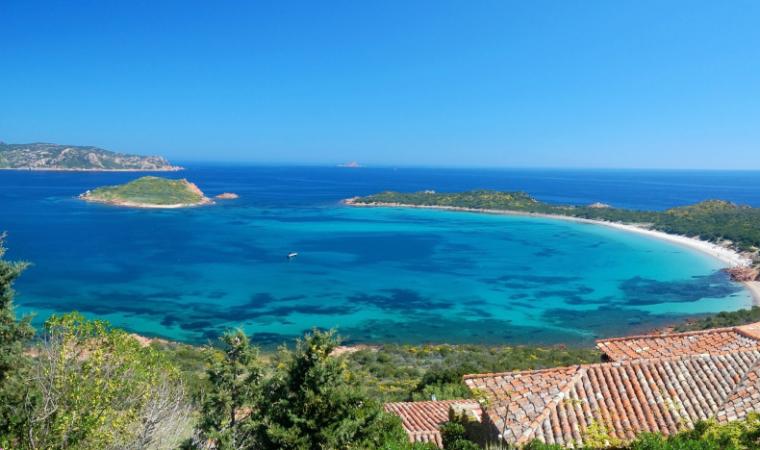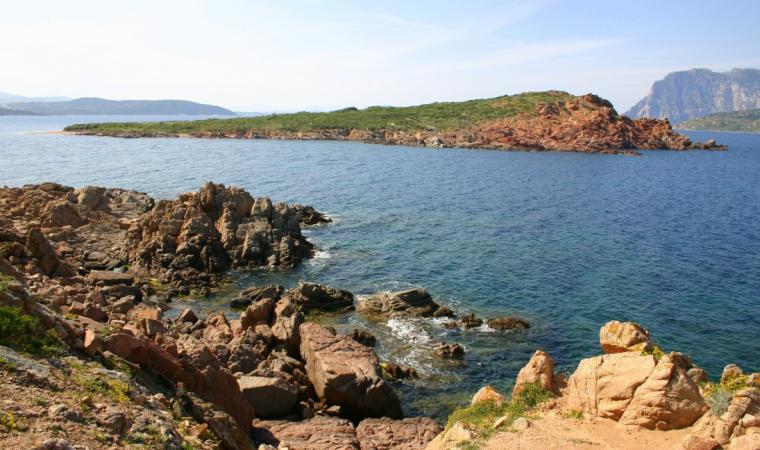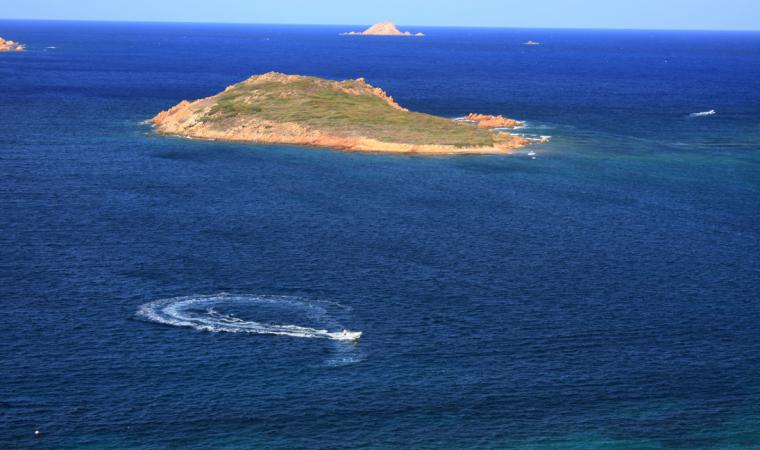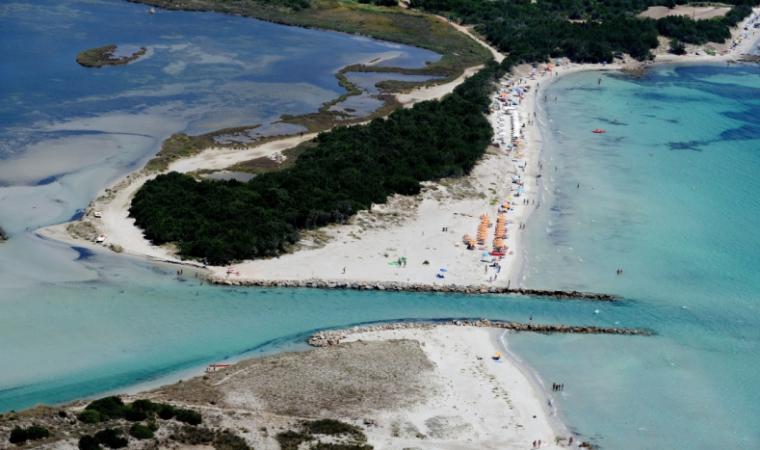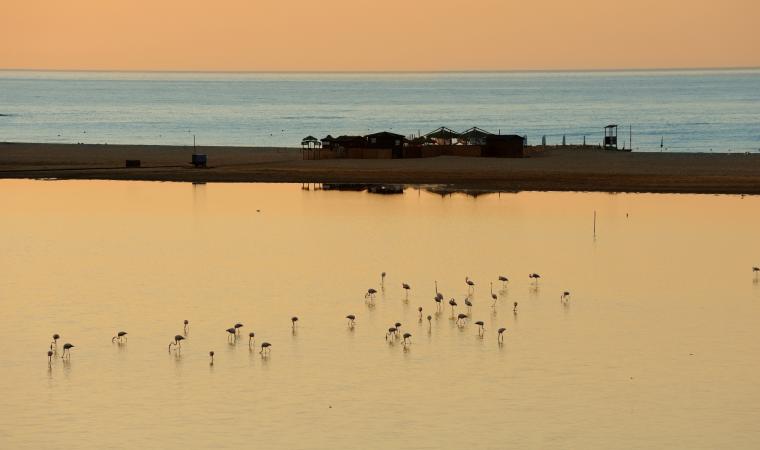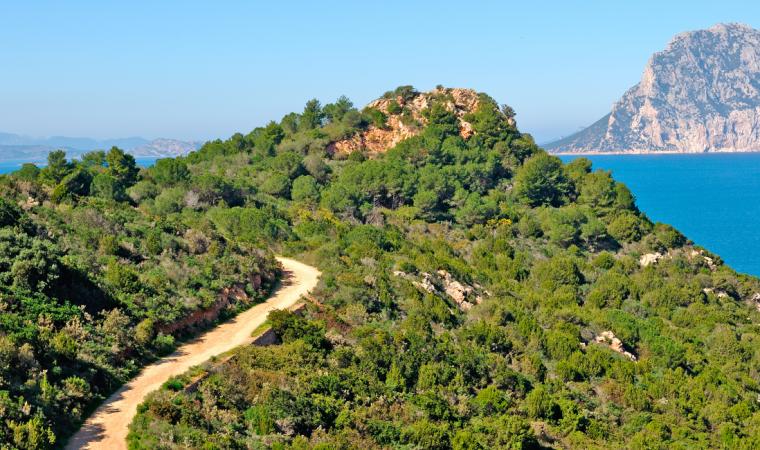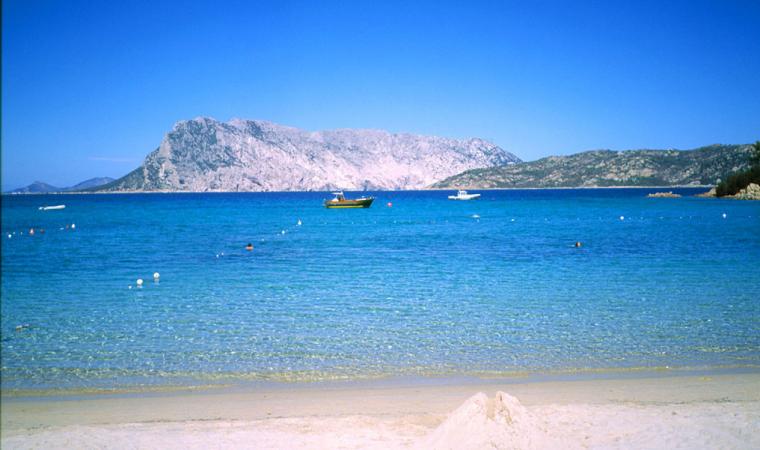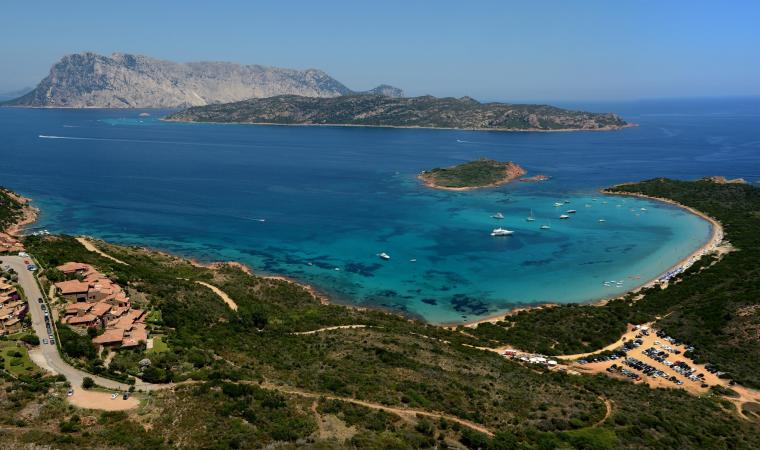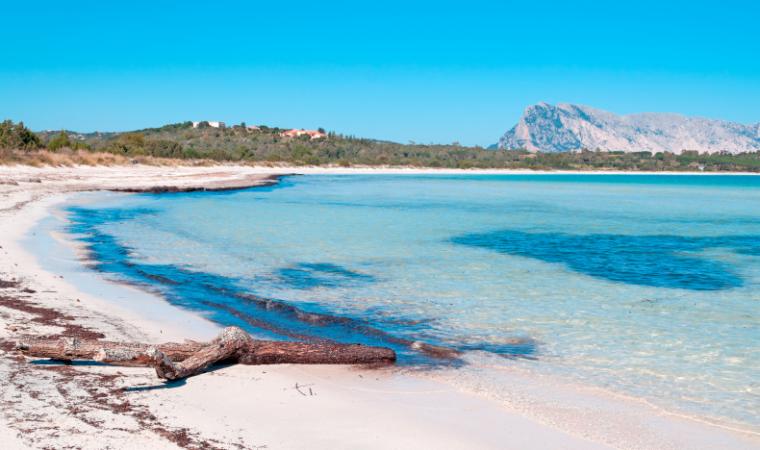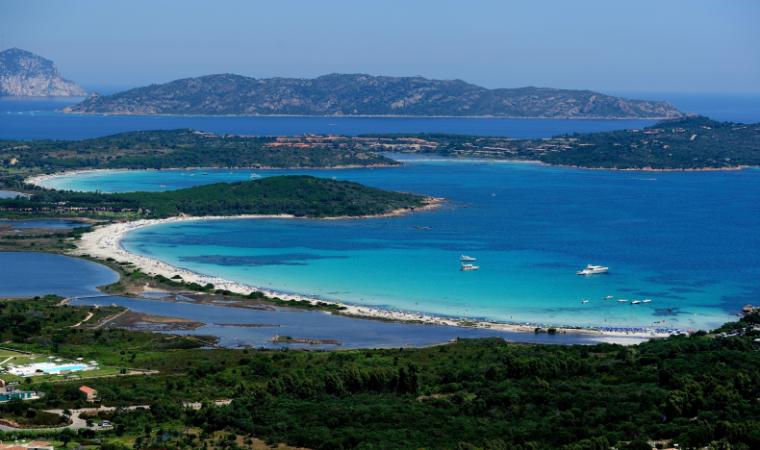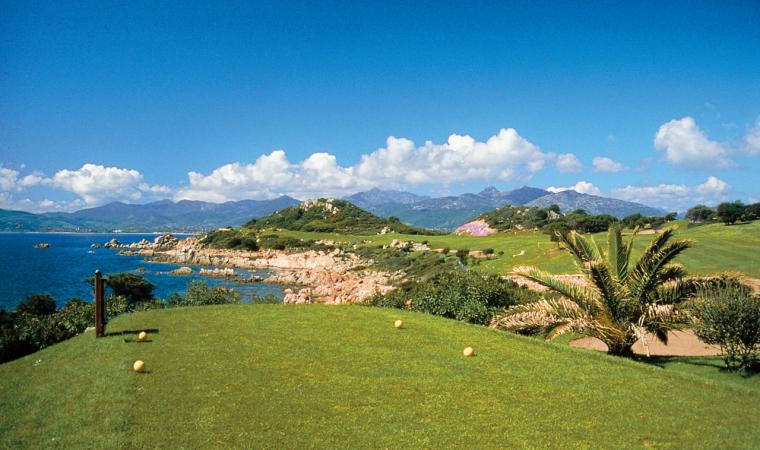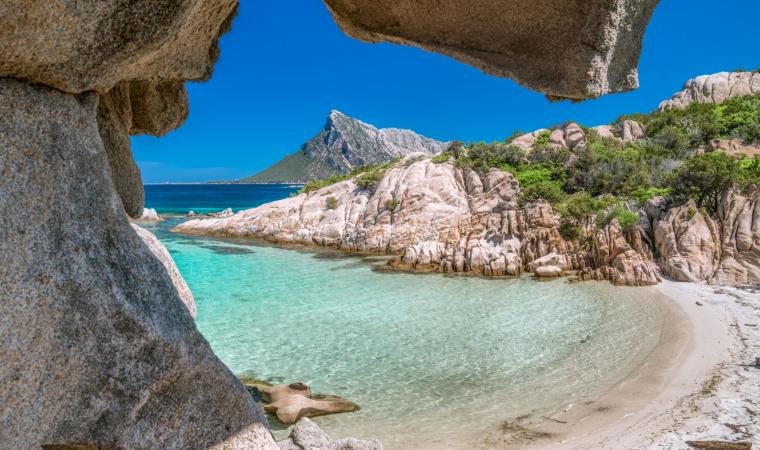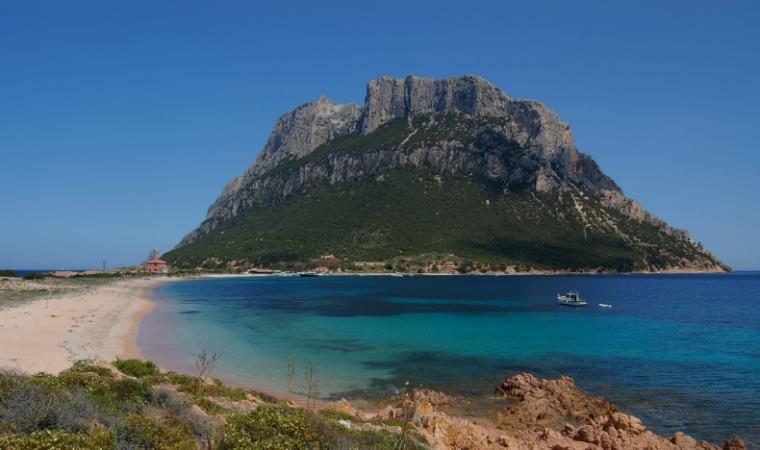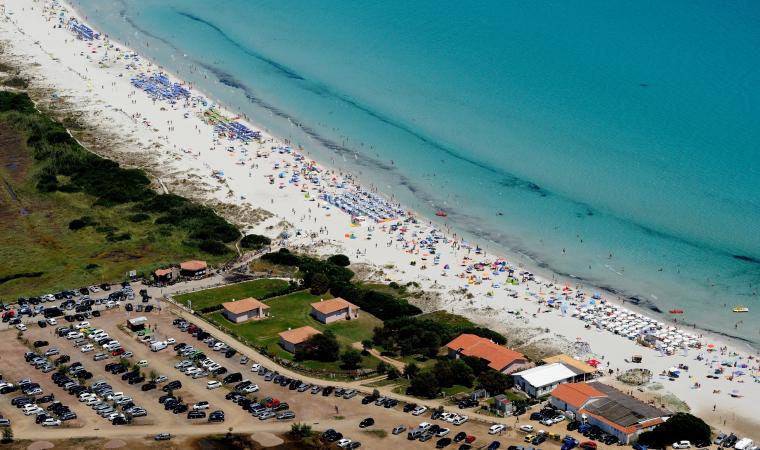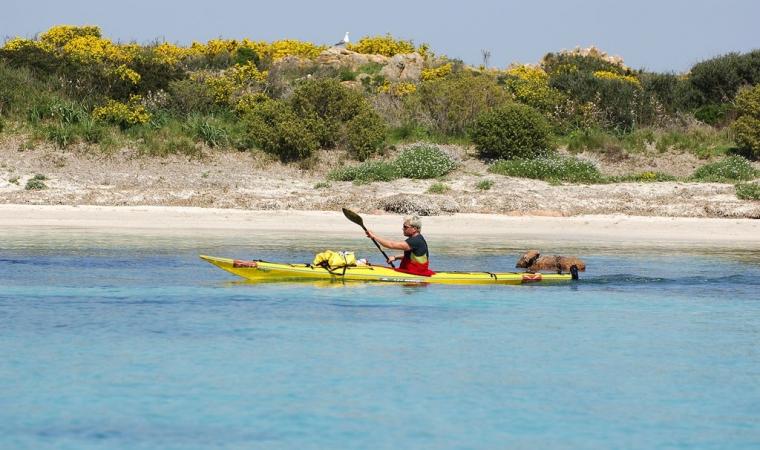The ‘tail’ is a strip of land, covered in Mediterranean greenery, stretching towards the enchanting sea in the protected area of Tavolara – Capo Coda Cavallo. It runs along a strip of golden sand, where you can enjoy a fantastic view. The beach is known as Punta Est, about 600 metres long, and as its name suggests, it is the easternmost stretch of coast of the promontory, which falls within the territory of San Teodoro. The vegetation in the uncontaminated landscape behind the beach helps to ‘colour’ the turquoise sea reflecting shades of emerald green, as well as filling the air with the fragrance of strawberry trees, junipers, mastic trees and myrtle. Opposite, you can admire crystal clear waters, where rocks and islets emerge: the closest is the island of Proratora, in front of the extreme tip of the cape, and can be reached via a path surrounded by greenery. Further on, you’ll notice the island of Molara and, in the distance, the unmistakable ‘elongated’ outline of Tavolara.
The unusual shape of the coastline allows it to be sheltered from most winds and so the sea is often calm, almost resembling a lagoon. Punta Est, like all the San Teodoro beaches, is particularly suitable for children, thanks to the very shallow waters near the shore and the availability of services, so much so that it has continued to receive the Green Flag award, since 2008, recognition assigned by Italian paediatricians. The beach is an excellent base for exploring the seabed with a mask and snorkel or with diving equipment: the protected marine area of Tavolara – Capo Coda Cavallo is, in fact, a treasure trove of biodiversity, with numerous species of fish and a variety of plant life, which inhabit ravines, grottos and the surfaces of rocks and caves. Some of the most fascinating places are the Secca del Papa shallows, on the coast of Tavolara, and the Piscine di Molara pools, ‘enclosed’ between granite rocks on the southwestern part of the islet.
To the west of the beach, after the ‘tail’, you will have a chance to visit picture-postcard beaches on both sides of the promontory. The northern coast features smaller and wilder coves, such as Lastra Ruia, made up of sand and amber pebbles, and Cala Suaraccia, also known as ‘Le Farfalle’ (The Butterflies), a 150-metre arc of sand that opens onto a turquoise sea dotted with rocks and ideal for snorkelling. The southern side ‘offers’ the coasts of Salina Bamba and Salinedda: the first one gets its name from the small pond behind it, with a shallow blue-green sea and white sand; Salinedda, on the other hand, has a beach where reddish rocks emerge, while the landscape in front of it features the island of Ruia.


